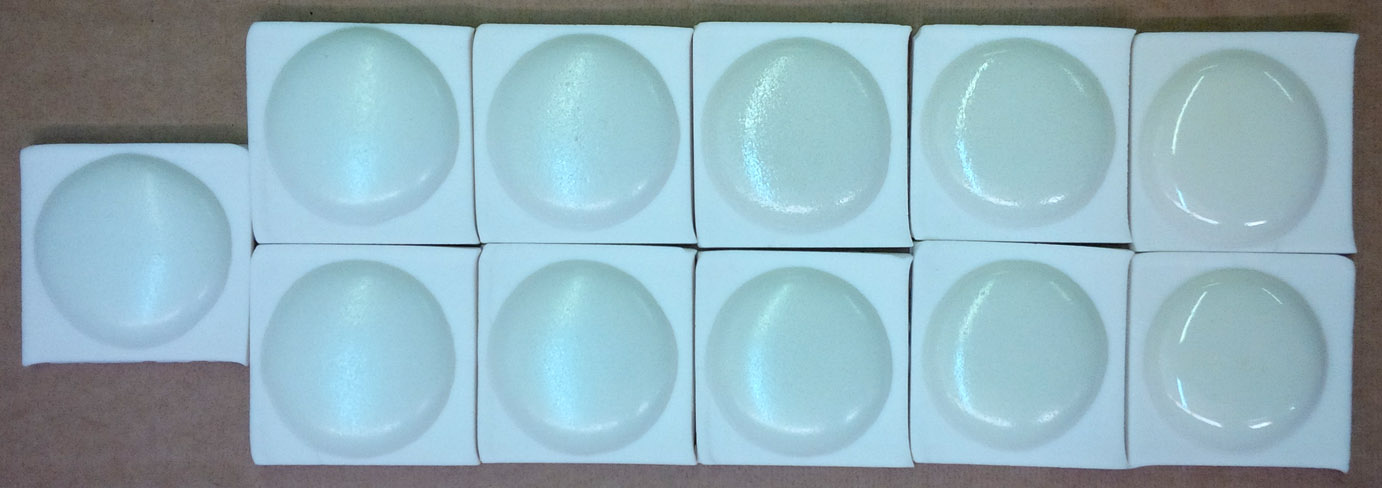Tune your glaze to the degree of matteness you want
G2934 is a popular matte for cone 6 (far left). The mechanism of the matteness is high MgO content (it produces a more pleasant surface that cutlery marks and insight-live.com/glossary/182">stains less than other mechanisms such as crystallization). But what if it is too matte for you? This recipe requires accurate firings, did your kiln really go to cone 6? Proven by a properly set firing cone? If it did, then we need plan B: Add some glossy to shine it up a bit. I fired these ten-gram GBMF test balls of glaze to cone 6 on porcelain tiles, they melted down into nice buttons that display the surface well. Top row proceeding right: 10%, 20%, 30%, 40% G2926B added (100% far right). Bottom: G2916F in the same proportions. The effects are similar but the top one produces a more pebbly surface.
Pages that reference this post in the Digitalfire Reference Library:
G2934 - Matte Glaze Base for Cone 6, G2916F - Cone 6 Stoneware/Whiteware transparent glaze, A good matte glaze. A bad matte glaze., A functional matte cone 6 glaze should melt as well as a glossy, What if G2934 fires too glossy, how can you increase matteness?, Tuning the degree of gloss on a matte black glaze, Glaze Recipes

This post is one of thousands found in the Digitalfire Reference Database. Most are part of a timeline maintained by Tony Hansen. You can search that timeline on the home page of digitalfire.com.
